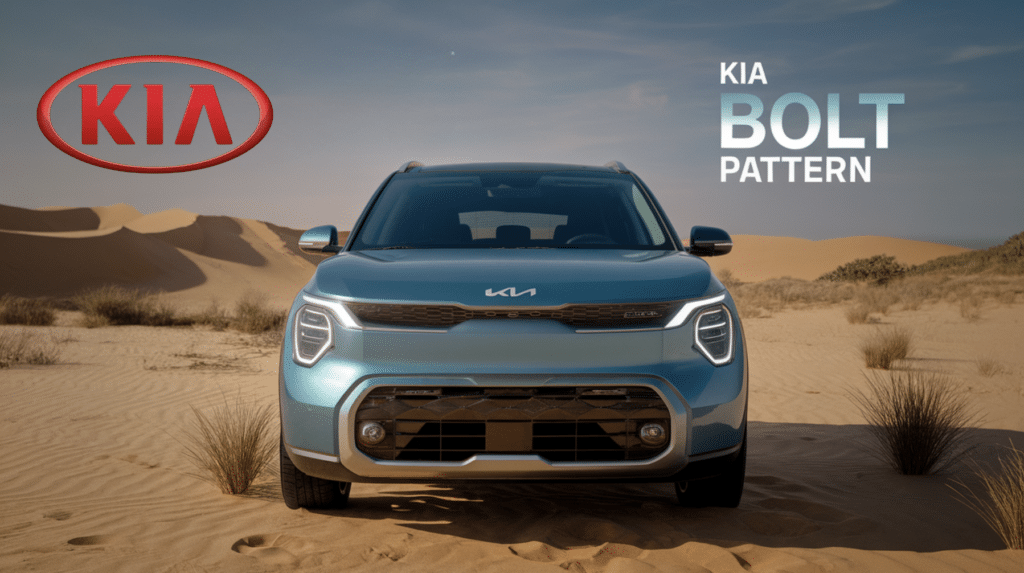Understanding your Kia’s bolt pattern is crucial for maintaining your vehicle’s safety and performance, especially regarding wheel compatibility.
These patterns specify the number of lug holes and their arrangement on your wheel, which are fundamental to ensuring proper wheel fitment and vehicle stability.
This knowledge becomes particularly important for Kia owners when considering wheel upgrades or replacements.
When driving a compact Spectra with its 4×114.3mm pattern or a modern Sportage featuring the 5×114.3mm configuration, understanding these specifications helps prevent costly mistakes and ensures optimal vehicle performance.
The right bolt pattern guarantees a secure wheel installation and impacts your vehicle’s handling, brake clearance, and overall safety.
This knowledge is essential for making informed decisions about wheel maintenance and upgrades for Kia owners.
What Is Kia’s Bolt Pattern?
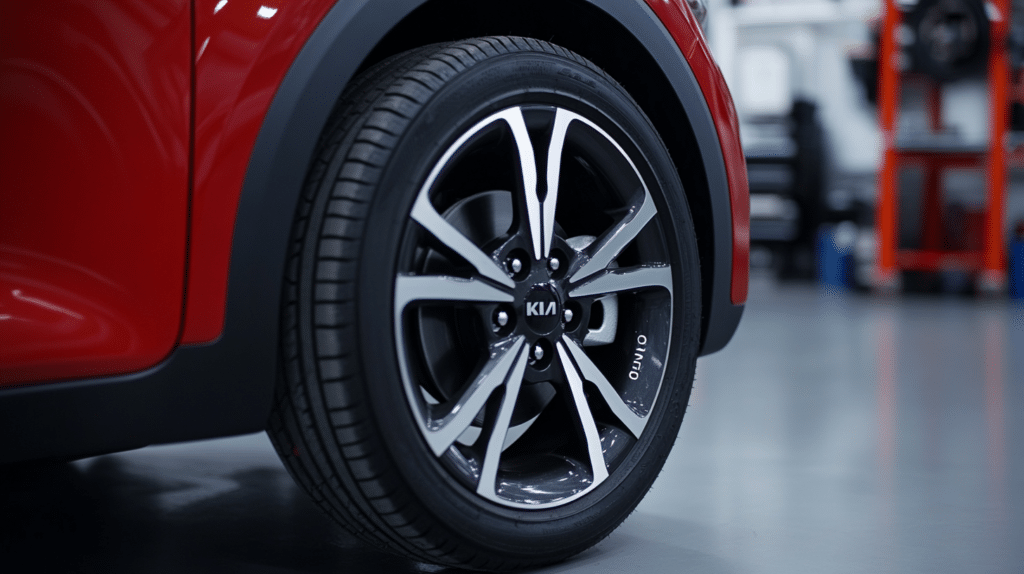
A bolt pattern specifies how many lug holes a wheel has and the diameter of the circle it forms.
For example, a “5×114.3” pattern means 5 lug holes with a 114.3mm diameter circle.
Kia vehicles typically use one of two common bolt patterns:
- 4×114.3mm (also known as 4×4.5″): Found on older and compact models like the Spectra
- 5×114.3mm (5×4.5″): More common on modern Kia vehicles, especially SUVs and crossovers like the Sportage
To measure a bolt pattern:
- For 4-lug wheels: Measure from the center of one lug hole to the center of the opposite hole
- For 5-lug wheels: Measure from the back of one hole to the center of the second hole across
When replacing wheels, it’s crucial to match both the bolt pattern and hub bore size (like the 67.1mm bore on the Kia Spectra) for proper fitment and safety.
Kia Bolt Patterns Compatibility Explained
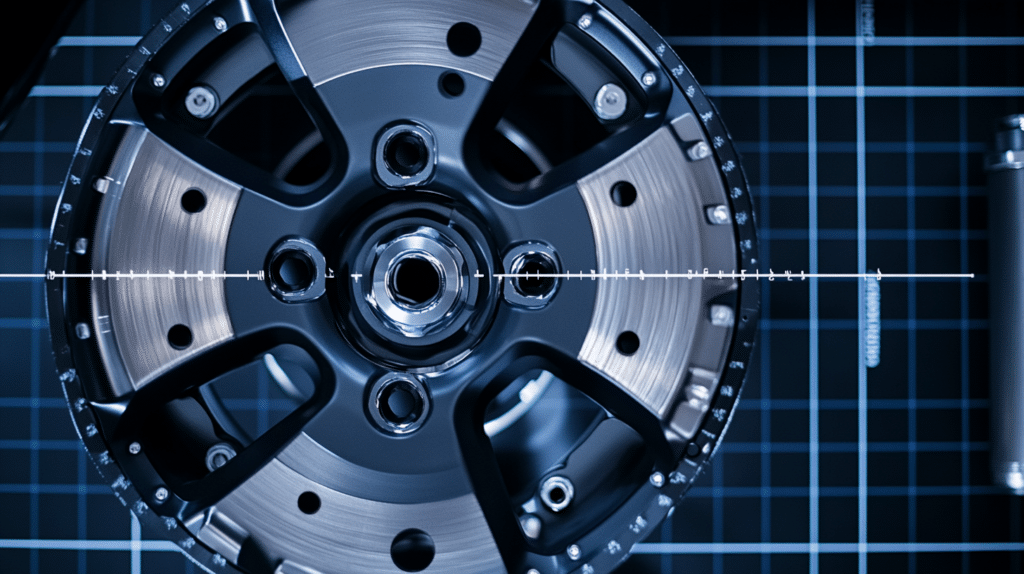
Understanding bolt pattern compatibility is crucial for Kia owners planning wheel upgrades. The most prevalent patterns used by Kia are carefully chosen for each vehicle’s weight, performance requirements, and intended use.
The 4×114.3mm pattern, typically found on earlier Kia models like the Spectra, provides adequate strength for smaller vehicles while maintaining cost efficiency.
Meanwhile, the 5×114.3mm pattern, common on newer models, offers enhanced stability and load distribution – particularly important for larger vehicles like SUVs and crossovers.
When considering wheel upgrades, matching both bolt pattern and hub bore is essential for:
- Maintaining proper weight distribution
- Ensuring stable vehicle handling
- Preventing potential wheel vibration
- Reducing uneven tire wear
- Preserving optimal brake clearance
Correct Bolt Patterns for A Kia
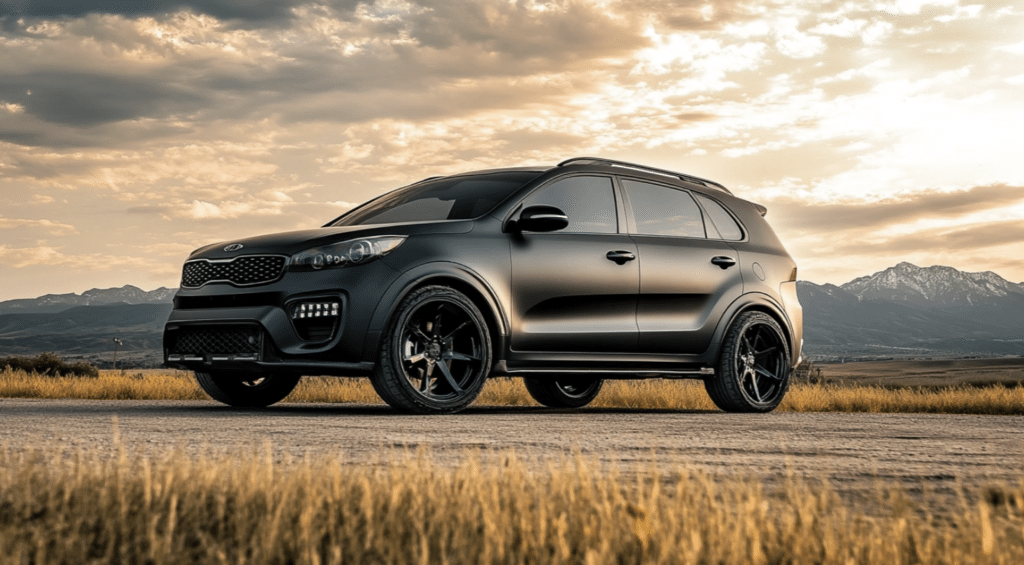
The most common bolt patterns for Kia vehicles are 5×114.3mm and 4×114.3mm, with several models featuring these configurations.
The 5×114.3mm pattern is predominantly found on newer and larger Kia models like the Sportage, Sorento, and newer Optima models, offering enhanced stability for these SUVs and mid-size sedans.
Compact Kia models typically use:
- 4×114.3mm: Older Spectra, Rio (pre-2018), and earlier Forte models
- 5×114.3mm: Modern K5, newer Forte, and current-generation Rio models
The hub bore size for most Kia vehicles is 67.1mm, which is crucial for proper wheel fitment.
When upgrading wheels, it’s essential to match both the bolt pattern and hub bore specifications to ensure safe installation and optimal performance.
Most Kia models’ standard lug nut thread size is M12x1.5, with a recommended torque specification of 65-79 ft-lbs.
Identifying Kia’s Bolt Pattern
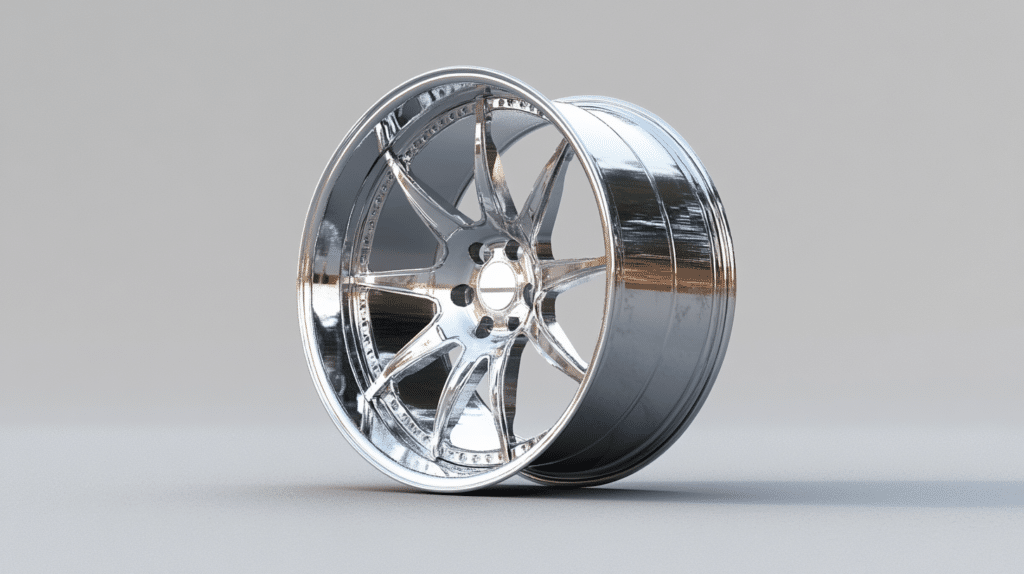
To accurately measure your Kia’s bolt pattern, you’ll need specific tools: a bolt pattern gauge (recommended), measuring tape, or ruler calibrated in millimeters and inches.
For Kia models with four lugs, measure from the center of one lug hole directly across to the center of the opposite hole.
For 5-lug patterns, common in newer Kias, measure from the back of one lug hole to the center of the second hole clockwise from it.
Essential measurement tips:
- Clean the wheel hub area thoroughly before measuring
- For 4-lug patterns (like older Spectras): Measure the diameter across wheel centers
- For 5-lug patterns (like modern Sportage): Measure the length between holes, then verify against manufacturer specs
- Always double-check measurements to ensure accuracy
Remember that hub bore size (typically 67.1mm for Kias) is equally important when selecting new wheels.
If you’re uncertain, most Kia dealerships and professional tire shops can provide the exact specifications for your model.
Mistakes When Choosing Kia Wheels
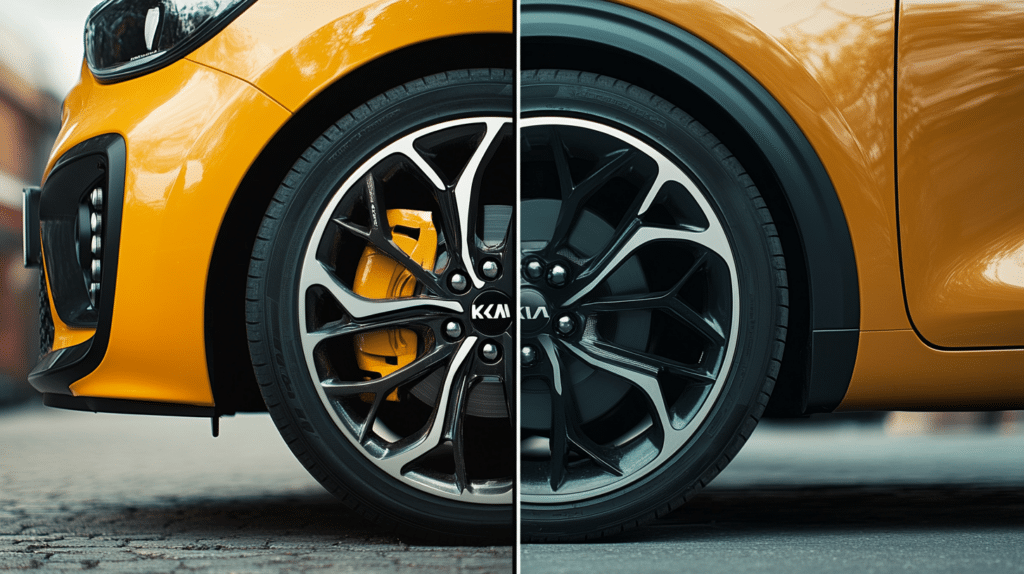
Common mistakes when selecting wheels for Kia vehicles often stem from misunderstanding the crucial specifications.
One frequent error is confusing similar-looking bolt patterns – for instance, mistaking a 5×114.3mm pattern for a 5x112mm, which appears nearly identical but can cause serious fitment issues.
This seemingly small 2.3mm difference can make wheels incompatible with your Kia.
Another critical oversight involves hub bore compatibility. While many Kia models use a 67.1mm hub bore, installing wheels with a smaller hub bore diameter will prevent proper fitment.
Though hub-centric rings can adapt wheels with larger hub bores, they cannot solve the issue of wheels with smaller ones.
Wheel offset errors are equally problematic. Choosing wheels with incorrect offset can cause tires to rub against the fenders or suspension components, potentially leading to dangerous driving conditions.
For example, installing wheels with a too-aggressive offset on a Kia Sportage or Sorento can cause interference with brake calipers or suspension components, even if the bolt pattern matches perfectly.
Kia vs. Other Brands Patterns

Most Kia models commonly use either 4×114.3mm or 5×114.3mm bolt patterns, which provides interesting compatibility with other manufacturers:
Kia vs. Toyota/Honda:
-
- Many Kias share the popular 5×114.3 pattern with Toyota and Honda models
- Lower-end Kia models often use 4×114.3, which is less common in Toyota/Honda lineups
Kia vs. Hyundai:
-
- Nearly identical bolt pattern usage due to shared platforms
- Both brands heavily utilize 5×114.3 for SUVs and newer sedans
- 4×114.3 pattern found in older/compact models of both brands
Cost Considerations:
- Direct-fit wheels (no adapters needed) typically range $100-300 per wheel
- Adapters to change patterns: $50-150 per wheel
- Premium brand wheels (BBS, Enkei) command 30-40% higher prices across all compatible makes
The shared patterns, especially 5×114.3, allow Kia owners to access a wide range of aftermarket wheel options at competitive prices.
Modifying Kia’s Bolt Pattern
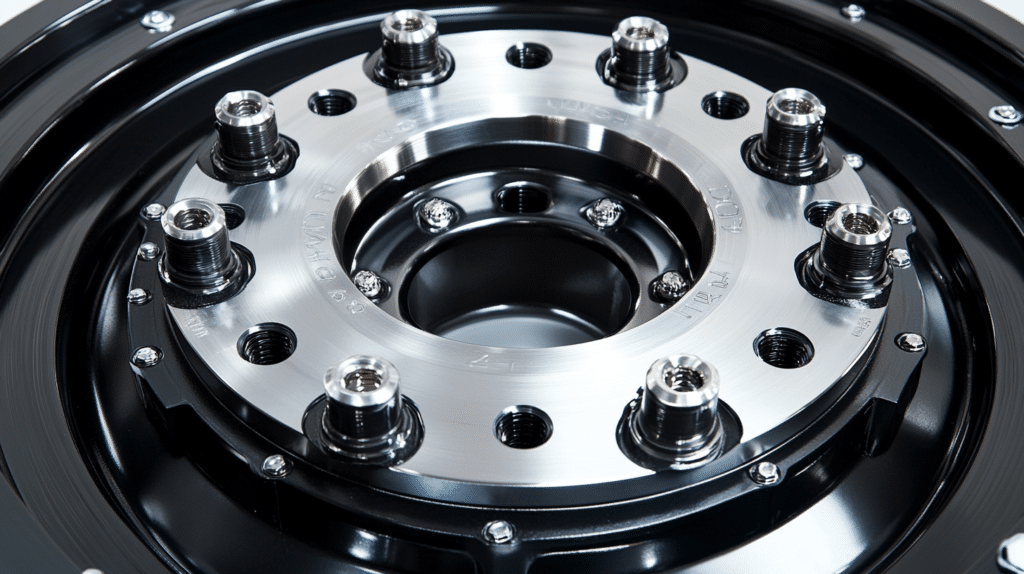
Modifying a Kia’s bolt pattern requires careful consideration of safety and performance.
Hub-centric adapters, ranging from $50-150 per wheel, provide the most reliable option for pattern conversion while maintaining proper wheel centering.
These are commonly used for conversions like 4×114.3 to 5×114.3, offering flexibility in wheel choice.
Wheel spacers present another modification option, typically costing $30-80 per wheel. However, these require careful consideration as they can affect handling and steering geometry.
Spacers must be hub-centric to prevent vibration and must be available in various thicknesses, from 15mm to 50mm. It’s crucial to note that using adapters or spacers increases wheel offset and may affect vehicle warranty coverage.
These modifications require precise torque specifications and regular inspection to maintain safety. Additionally, they could impact brake caliper clearance.
For optimal safety and performance, it’s recommended to stick with direct-fit wheels matching your Kia’s original bolt pattern whenever possible.
Maintaining Kia’s Bolt Patterns
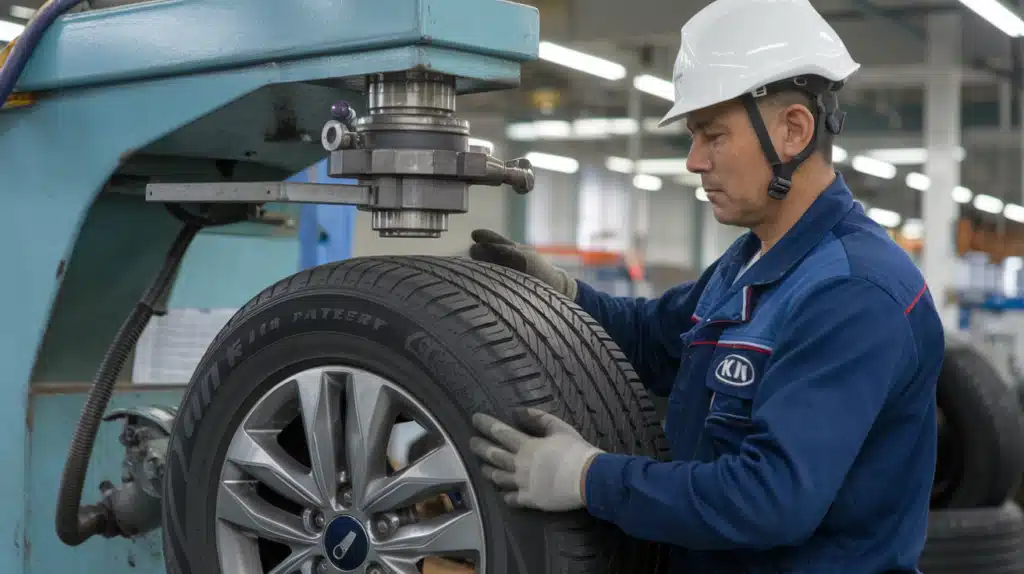
Regular maintenance of your Kia’s bolt patterns is crucial for optimal wheel performance and safety.
To prevent wear and tear, ensure all lug nuts are properly torqued to the manufacturer’s specifications (typically 65-79 ft-lbs for most Kia models).
Clean the mounting surfaces regularly to prevent corrosion and ensure proper wheel seating. Avoid using impact wrenches without torque control, leading to over-tightening and damaged threads.
Perform visual inspections of lug nuts and bolt holes every time you rotate your tires, typically every 5,000-7,000 miles.
Check for signs of rust, stripped threads, or elongated bolt holes. Retorque the lug nuts after the first 50 miles following any wheel installation, as initial settling can cause them to loosen slightly.
Consider using a torque wrench to maintain precise specifications during maintenance.
Conclusion
Understanding Kia bolt patterns is more than just a technical detail – it’s a fundamental aspect of vehicle maintenance and modification that directly impacts your safety and driving experience.
Each specification ensures proper wheel fitment and performance from the common 4×114.3mm pattern found in older models to the 5×114.3mm configuration in modern vehicles.
While this guide provides comprehensive information about Kia bolt patterns, it’s always recommended to consult professional technicians when planning wheel replacements or upgrades.
Proper wheel fitment affects everything from handling to brake performance, making professional guidance invaluable for maintaining your Kia’s safety and optimal performance.
Don’t hesitate to seek expert advice – it’s a small investment that can prevent costly mistakes and ensure peace of mind.


